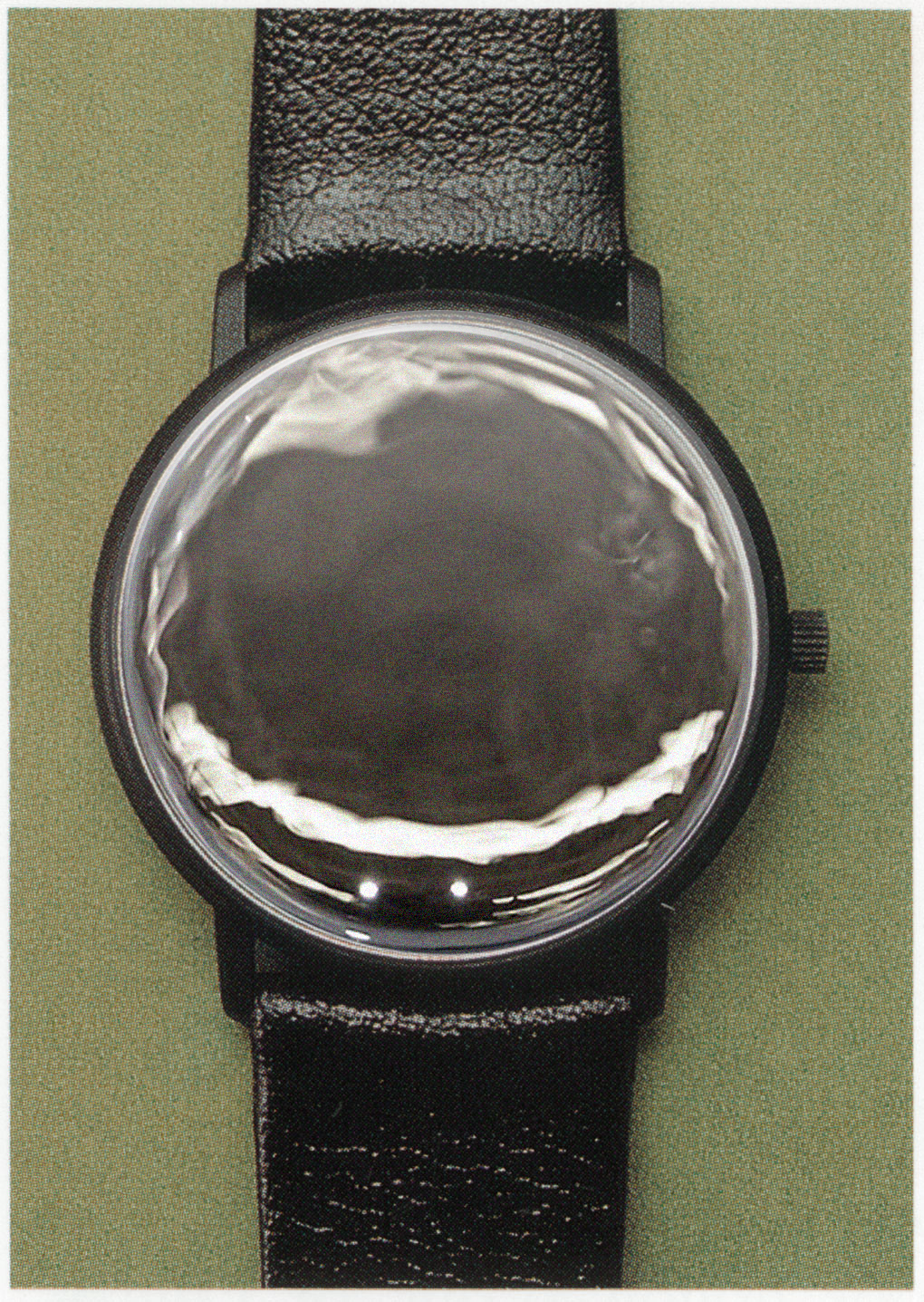Watch (for Tobi & Tibor)
1983 M&Co. wristwatch, Hg (mercury), polyethylene, metal stand, glass mirror
9.25” x 1.13” x .25” (wristwatch)
21” x 10” x 10” (overall)
2013
Watch yourself. Feel the wait. ︎
Mercury is heavier than gold, more brilliant than platinum, deadlier than lead. Possessing it is a powerful feeling, so much downward force from just a few drops of liquid. The mirrored surface, the lightning quickness, the uncanny gravity of it, Mercury is the stuff of magic. Alchemists believed that mercury was the First Matter from which all metal was born. Large pools of mercury were used by Mayans as ritual mirrors into the underworld, and by Emirs of Islamic Spain as grotesque displays of worldly extravagance. Most notably it was used by ancient Chinese as an elixir of immortality, with disastrous results.
Initial symptoms of overexposure to mercury are terrifying in their vagueness; excessive shyness, confidence loss, nervousness, clumsiness, and irritability. Symptoms of advanced mercury poisoning are more straightforward; memory loss, intelligence loss, madness, death.
Time has similar side effects.
Are you going insane? Or are you just getting older?


INFLUENCES
-
Carsten Høller’s early studies in danger and altered states, esp. Killing Children, 1992 and Upside Down Mushroom Room, 2000
-
Dan Graham’s reflection pavillions.
"We watch ourselves, watch others, watch others being watched, watch ourselves being watched."
-
Annish Kapoor’s disorienting high-producition-value reflecting objects, esp. Cloud Gate, 2004 and As yet Untitled, 2007
-
Jeppe Hein's efficiency and dry humor.
-
Rene Magritte's dreamy/doomy/lonely minimalism, esp. Not to be Reproduced 1937.
-
Tobias Wong's Casio watch remixes that I helped him manufacture. Also Mirror Puzzle 2002 and his retail interventions, esp. The Wrong Store 2007.
-
Tibor Kalman's weary consumerism, and the fact that his M&Co watch - the chassis of which this piece employs - was born the same year that I was.
- Qui Shi Huang, the first emperor of China (he unified the warring states ushering in 2000 years of imperial rule, began construction of the Great Wall, had roads, canals and standard measurements developed etc etc), was killed from a regimen of mercury pills in an attempt to achieve immortality. He is buried in a 6km diameter underground tomb rumoured to replicate the kingdom he ruled, with the rivers of the land above ground mirrored in mercury and the constellations written into the ceiling with pearls. As it would have been impractical to have his entire military buried with him to protect him in the afterlife, Qui Shi Huang commissioned thousands of martial avatars in clay - the famous Terracotta Soldiers. He did, however, arrange for the workers and engineers involved in the construction of his burial chambers to be entombed along with him, by surprise, alive, to protect the secrets contained within. His tomb remains unexcavated.